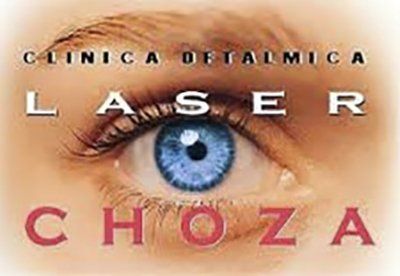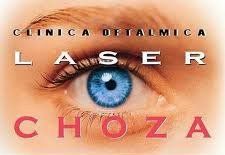Strabismus Surgery
Strabismus Surgery
Strabismus Cirugia
Amblyopia or Loose Eye
It is the loss of the ability to see clearly through one eye. It is also called "lazy eye". It is the most common cause of vision problems in children.
Causes and symptoms
Amblyopia occurs when the nerve path from one eye to the brain does not develop during childhood. This happens because the abnormal eye sends a blurred or wrong image to the brain.
It is the loss of the ability to see clearly through one eye. It is also called "lazy eye". It is the most common cause of vision problems in children.
Causes and symptoms
Amblyopia occurs when the nerve path from one eye to the brain does not develop during childhood. This happens because the abnormal eye sends a blurred or wrong image to the brain.
This confuses the brain and it can learn to ignore the image coming from the weaker eye.
Strabismus (crossed eyes) is the most common cause of amblyopia and there is often a family history of this condition. The term "lazy eye" refers to the amblyopia that often occurs along with strabismus, however, amblyopia can occur without strabismus.
The symptoms of the condition include
In most cases, amblyopia can be detected with a complete eye examination.
Often no special tests are needed
Treatment
The first step will be to correct any eye condition that is causing poor vision in the amblyopic eye (such as cataracts).
Children with a refractive error (hyperopia, myopia, or astigmatism) will need glasses.
Then, a patch is placed on the normal eye, which forces the brain to re-know the image of the eye
with amblyopia. Sometimes, ophthalmic drops are used to blur the vision of the normal eye in
instead of putting a patch on it. Children whose vision is not going to fully recover and those with only a good eye due
to any disorder must wear scratch resistant glasses.
Expectations (prognosis)
Children who receive treatment before the age of 5 years will almost always recover to a normal vision. However, they may still have problems with the perception of depth. If treatment is delayed, permanent vision problems may occur. Children treated after the age of 10 years can only expect partial vision recovery.
Prevention
Identifying and treating the problem early on prevents children from having permanent visual loss.
All children should have a complete eye exam at least once between three and five years of age.
Special methods are used to measure vision in a child who is too small to talk.
Most eye care professionals can perform these techniques.
Strabismus (crossed eyes) is the most common cause of amblyopia and there is often a family history of this condition. The term "lazy eye" refers to the amblyopia that often occurs along with strabismus, however, amblyopia can occur without strabismus.
Other causes include:
- Cataracts in children
- Hyperopia, myopia or astigmatism, especially if it is greater in one eye
The symptoms of the condition include
- Eyes that turn inward or outward
- Eyes that do not seem to coordinate,
- Inability to judge depth correctly
- Poor vision in one eye
Tests and exams
In most cases, amblyopia can be detected with a complete eye examination.
Often no special tests are needed
Treatment
The first step will be to correct any eye condition that is causing poor vision in the amblyopic eye (such as cataracts).
Children with a refractive error (hyperopia, myopia, or astigmatism) will need glasses.
Then, a patch is placed on the normal eye, which forces the brain to re-know the image of the eye
with amblyopia. Sometimes, ophthalmic drops are used to blur the vision of the normal eye in
instead of putting a patch on it. Children whose vision is not going to fully recover and those with only a good eye due
to any disorder must wear scratch resistant glasses.
Expectations (prognosis)
Children who receive treatment before the age of 5 years will almost always recover to a normal vision. However, they may still have problems with the perception of depth. If treatment is delayed, permanent vision problems may occur. Children treated after the age of 10 years can only expect partial vision recovery.
When I contacted a medical professional
- Check with your doctor or ophthalmologist if you suspect a vision problem in a young child
- Lack of concentration
- Very little use
- Headaches
- Wandering eye
Prevention
Identifying and treating the problem early on prevents children from having permanent visual loss.
All children should have a complete eye exam at least once between three and five years of age.
Special methods are used to measure vision in a child who is too small to talk.
Most eye care professionals can perform these techniques.
Strabismus in Children
Laser Choza
We care about one of the most wonderful gifts of life: the gift of sight
Schedule Appointment
Contact
Gulf of Cortes 2980
North Vallarta
Guadalajara, Jalisco, ZIP 44690
PHONES:
01-800 581-3424
USA 01152 (33) 3616-3391
(33) 3615-2016
(33) 3615-2017
Copyright © 2019 Oftalmologist Guadalajara Mexico




